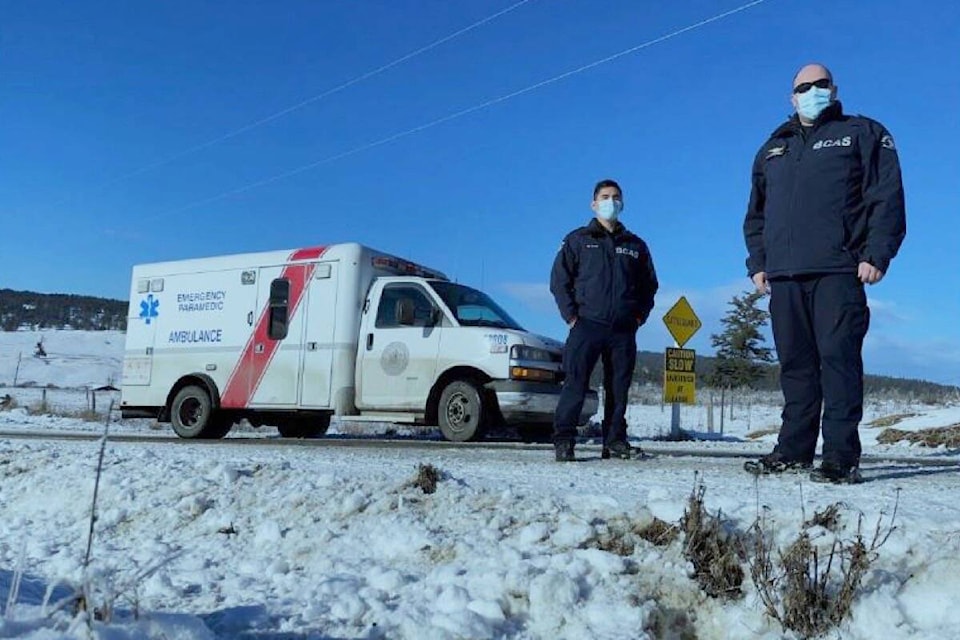Improved paramedic staffing with BC Emergency Services is coming to some B.C. Interior communities.
Eight communities including Alexis Creek, Clinton, Fruitvale, Logan Lake, Lumby, Midway, Rossland and Salmo were upgraded to the 24/7 full-time “alpha” model in ambulance stations on April 1, 2024.
Under this model, each station has eight full-time positions, with paramedics in the station 24 hours a day, noted a news release from BCEHS, adding compared to the previous model, this means that there will be paramedics in the station on duty three times more than with the station-on-call (SOC) model that had paramedics at the station eight hours a day, and 16 hours on call.
Eight communities, including Anahim Lake, Lytton, Elkford, Greenwood, Kaslo, New Denver, Riondel and Winlaw upgraded to a new “mix shift” staffing model on April 1, 2024.
The mix shift model has staff on duty in the station twice as often as they did with the SOC model, with 16 hours in station on duty and eight hours on call (pager) at night.
Five communities - Seton Portage, Gold Bridge, Blue River, Edgewood and Field –are benefiting from new full-time paramedic unit chiefs to provide support to on-call paramedic staffing in these communities.
The on-call “kilo” model in these stations offers more flexible staffing options to maximize local recruitment. It also leverages the latest collective agreement with paramedics, which increased the on-call rate from $2 per hour to $12 per hour.
“Since 2017, our government has supported BCEHS’s work to significantly improve paramedic staffing and strengthen and transform ambulance service throughout the province,” said Adrian Dix, Minister of Health stated in the news release.
Leanne Heppell, BCEHS’ Chief Ambulance Officer said during discussions with community leaders in rural and remote communities they heard how critically important paramedic services are.
“These improved paramedic staffing models and the increase in full-time and regular part-time positions together with the changes we are making to enhance community paramedicine services are an exciting investment in the health and well-being of our patients in rural and remote British Columbia,” Heppell said.
Ambulance Paramedics of BC president Jason Jackson said the changes are important.
“Patient care is the most important thing to us, and this new approach helps us better recruit and retain paramedics to work in these smaller communities, improve how we respond to 911 calls, and most importantly, help paramedics provide better care to our patients.”
At least 55 stand-alone Community Paramedic positions (55.2) FTEs) will focus on delivering community-based care and outreach services. Unlike the previous scheduled on-call model, these roles are no longer automatically integrated into the 911 emergency response. They will however respond to potentially life-threatening 911 calls if they are the nearest available unit, along with regular ambulance resources providing support.
While the conversions are complete as of April 1, 2024, the job competition and recruitment process for the new positions is ongoing. Many of the new shifts are currently being filled by existing staff working back-fill to fill the new roles.
To help recruiting efforts BCEHS said it has created a dedicated BCEHS talent acquisition team with 32 permanent staff as well as temporary support staff. BCEHS has also created a proactive recruitment team with five Indigenous recruiters, focused on bringing more Indigenous paramedics into BCEHS.
Don’t miss out on reading the latest local, provincial and national news offered at the Williams Lake Tribune. Sign up for our free newsletter here.
